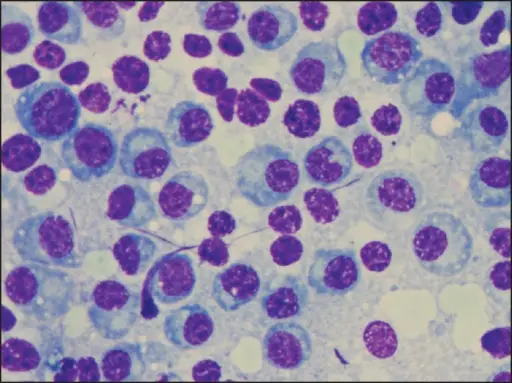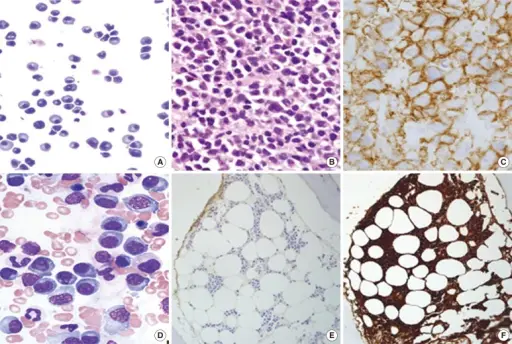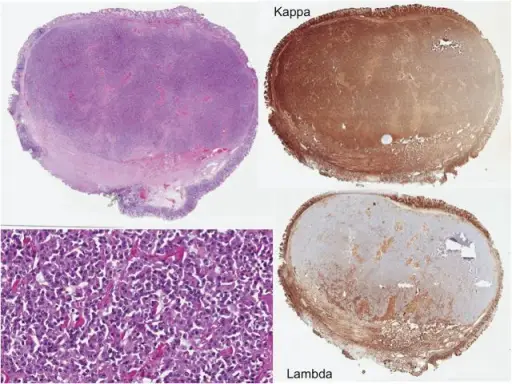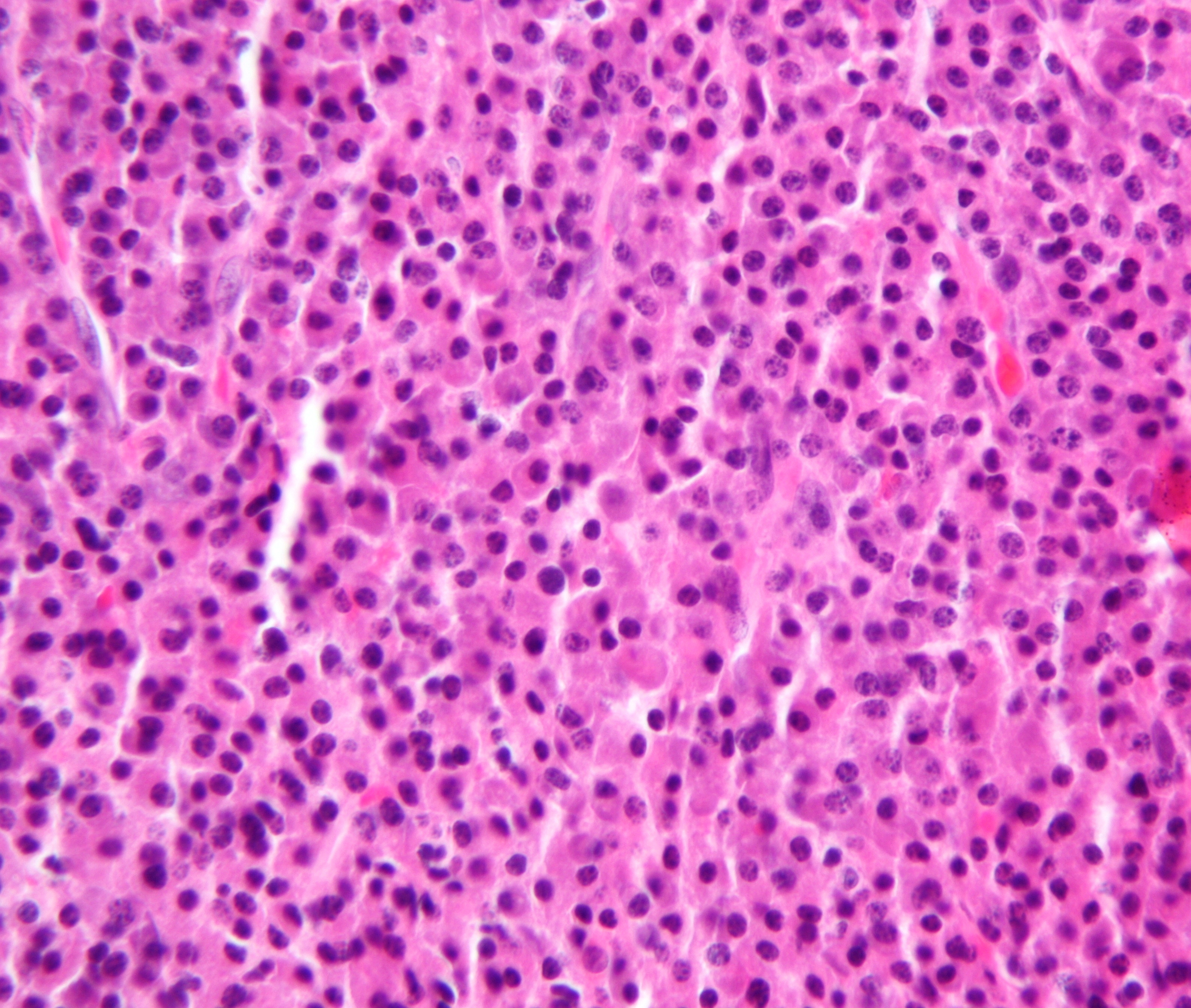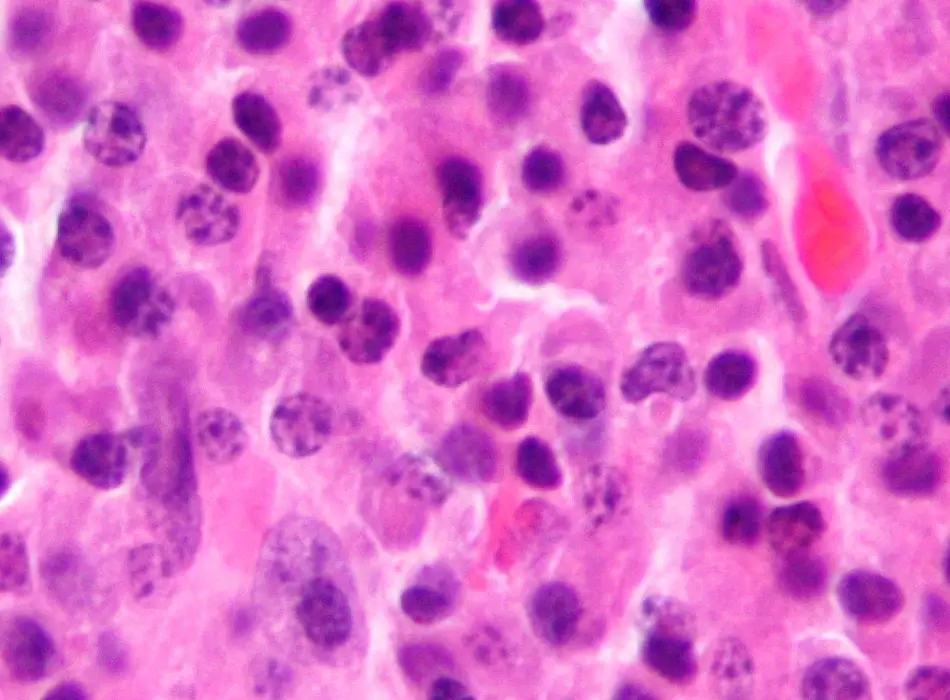Plasmacytoma is a tumor of plasma cells of bony or soft tissue and can occur anywhere in the body without evidence of systemic disease.
What is the Pathology of Plasmacytoma?
The pathology of plasmacytoma is:
-Etiology: The cause of plasmacytoma is unknown. It is suggested that it may be caused by inhalation of chemicals, chronic stimulation, an overdose of irradiation, viral infection, and genetic disorders in the reticuloendothelial system.
-Genes involved: CCND1 gene.
-Pathogenesis: The sequence of events that lead to plasmacytoma show that losses of chromosome 13 arm 1p and 14q and gains in chromosome 19 arm 1q and 9q which play a role in tumorigenesis of plasmacytomas.
-Histology: The histology associated with plasmacytoma shows monoclonal cell infiltrates in one or more lytic bone lesions or extramedullary tissue.
How does Plasmacytoma Present?
Patients with plasmacytoma typically are males more than females and present at age range of 55 to 60 years. The symptoms, features, and clinical findings associated with plasmacytoma include pain in the affected bone, back pain and other consequences of the bone lesion.
How is Plasmacytoma Diagnosed?
Plasmacytoma is diagnosed by lesional biopsy or fine needle aspiration techniques.
How is Plasmacytoma Treated?
Plasmacytoma is treated with surgery, radiotherapy and chemotherapy.
What is the Prognosis of Plasmacytoma?
The prognosis of plasmacytoma is poor. The causes of poor prognosis include local recurrence, incomplete resection with functional damage, local lymph node metastasis, progression to multiple myeloma, or new bone lesions formation with multiple myeloma.

